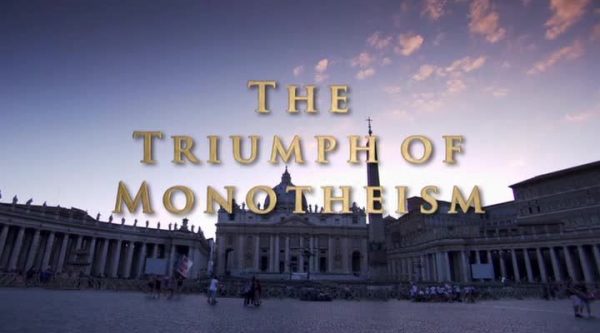Egyptian Journeys with Dan Cruickshank episode 5: Dan delves into the dark side of the court of Ramesses III, tracing the conspiracy that spread through his harem and may have led to his mysterious death. At Ramesses III’s temple at Medinet Habu, the pharaoh wrote his own legacy in stone – huge wall carvings celebrating the glories and achievements of his reign – an attempt to match his illustrious predecessor, Ramesses the Great. But behind the propaganda, Ramesses III was far from being a strong pharaoh in control of his country; he was not even in control of his own harem.
One papyrus bundle has survived to tell us of dark intrigue swirling around this pharaoh in crisis. With Ramesses unable to decide whether to take Isis or Tye for his queen, the harem women took things into their own hands, starting a rebellion that spread through the court and the army and possibly led to his murder.
Egyptian Journeys with Dan Cruickshank episode 5
Ramesses III
Usermaatre Meryamun Ramesses III (also written Ramses and Rameses) was the second Pharaoh of the Twentieth Dynasty in Ancient Egypt. He is thought to have reigned from 26 March 1186 to 15 April 1155 BC and is considered to be the last great monarch of the New Kingdom to wield any substantial authority over Egypt. His long reign saw the decline of Egyptian political and economic power, linked to a series of invasions and internal economic problems that also plagued pharaohs before him. This coincided with a decline in the cultural sphere of Ancient Egypt.
However, his successful defense was able to slow down the decline, although it still meant that his successors would have a weaker military. He has also been described as a “warrior Pharaoh” due to his strong military strategies. He led the way by defeating the invaders known as “the Sea Peoples”, who had caused destruction in other civilizations and empires. He was able to save Egypt from collapsing at the time when many other empires fell during the Late Bronze Age; however, the damage of the invasions took a toll on Egypt. Rameses III constructed one of the largest mortuary temples of western Thebes, now-called Medinet Habu.
Ramesses III was the son of Setnakhte and Tiy-Merenese. He was assassinated in the Harem conspiracy led by his secondary wife Tiye and her eldest son Pentawere. This would ultimately cause a succession crisis which would further accelerate the decline of Ancient Egypt. He was succeeded by his son Ramesses IV, although many of his other sons would rule later.
Dan Cruickshank
Daniel Gordon Raffan Cruickshank (born 26 August 1949) is a British art historian and BBC television presenter, with a special interest in the history of architecture.
Cruickshank holds a BA in Art, Design and Architecture and was formerly a Visiting Professor in the Department of Architecture at the University of Sheffield and a member of the London faculty of the University of Delaware. He is an Honorary Fellow of the Royal Institute of British Artists, a member of the Executive Committee of the Georgian Group and on the Architectural Panel of the National Trust, and is an Honorary Fellow of RIBA.
He has served as Historic Buildings Consultant for ADAM Architecture since 1999 and has been involved in the repair and restoration of many historical buildings including Spencer House in St James’s, Heveningham Hall in Suffolk and numerous early 18th-century houses in Spitalfields and other parts of London.




